This week we’re talking about theme, a concept not talked about nearly enough in writing, I think. In term papers (ugh) and literary criticism (double ugh), it’s discussed quite a bit. But among writers, not enough. On Monday I defined theme as the answer to the following question: What is your story’s truth? The answer to this question lies in the subtext of your characters’ actions, their dialogue, thoughts. In other words, within your characters themselves.
Characters are a reader’s anchor in a story. They drive everything, including theme. If a reader does not connect with or feel for acharacter at all, a writer has lost the chance to connect with her reader. Any craft book on writing will teach a writer how to create convincing characters. And once fully realized, these characters can breathe life into your story, and into your reader as well. Ultimately, it is they who will bring the theme to light.
Take, for example, J. D. Salinger’s Holden Caulfield. I reread The Catcher in the Rye often, and each time I fall in love with Holden’s voice all over again. It’s his combination of sharp wit and cynicism so deeply ingrained, it’s almost palpable. Holden is funny, straightforward. He speaks his mind, despite the consequences.
Therefore, it is easy to be enchanted by Holden and his story, to laugh hard enough to miss what is beneath the surface. This is exactly what happened when I read TCITR in the tenth grade: I thought it was funny when Stradlater sat on Holden’s chest and, thanks to Holden, I went around calling everyone a bastard for a solid two weeks. Ah, the ignorance of youth. I decided to read Salinger’s masterpiece again when I was 20, paying more attention now to Holden’s voice, his tone, and there I found sadness and a long dealt-with pain I was oblivious to as a tenth grader.
It was when I realized all of the above that Holden ceased to be a character for me and instead became a real person, someone I cared about and to whom I—and millions of other people—could relate. Were we as readers unable to do either of these things, Holden’s journey would mean nothing to us. It is because we are able to feel for Holden that we are able to feel with him, and ultimately understand the greater purpose of his story.
Originally published at Through the Tollbooth. Please leave any comments there.
This week I’d like to talk about theme. Like most of you, I spend a lot of time writing, thinking about writing, and discussing writing, which means I’ve had countless conversations about plot, character development, suspense. There was even one very long—and surprisingly tense—conversation about the appeal of says Teresa vs. Teresa says. Well, Teresa says we writers don’t discuss theme enough, though I’m kind of obsessed with it. Like, I wrote my masters thesis on it at Vermont College, from which I will crib generously this week because, as it turns out, my brilliance is finite (says Teresa, sarcastically).
But back to theme–What exactly is it? Well, I’ll first tell you what it is not. Theme is neither a message nor an agenda. These elements exist on the outside of a novel, pushing and pulling the narrative in whichever direction they sees fit to fulfill their purpose. Theme, on the other hand, is a natural part of the inner-workings of story, growing organically from the elements of fiction. In his craft book The Art of Fiction, author John Gardner writes,
Theme, it should be noticed, is not imposed on the story but evoked from within it—initially an intuitive but finally an intellectual act on the part of the writer. The writer muses on the story idea to determine what it is in it that has attracted him. . . . He toys with various ways of telling his story, thinks about what has been said before . . . broods on every image that occurs to him . . .trying to figure out—before he writes, while he writes, and in the process of repeated revisions—what it is he really thinks . . . Only when he thinks out a story in this way does he achieve not just an alternative reality or, loosely, an imitation of nature, but true, firm art—fiction as serious thought (Gardner, 177–78).
In this way, theme is as much part of the writing process as characterization and word choice. It is the end result of what a writer has to say, the answer to one question: What is this story’s truth?
The answer comes from within. Theme should never be stated outright. It exists in subtext, lurking in the meanings of the words we choose, the things our characters say, their actions, even the silence on the page. Subtlety is key. Subtext should exist in an ethereal form. If the story is the body, the subtext is its soul.
And what, pray tell, is subtext? It is what is not on the page. A character may cast a wayward glance, or reprimand with a short, sharp word. The subtext is the why, the motivation and meaning that a reader must discern for himself with the clues provided. Of these elements from reality that contribute to the creation of subtext, Wallace Stegner writes, in his brilliant craft book On Teaching and Writing Fiction, “the parts are reassembled in such a way that the architecture, the shape of the action, is meaningful. And if that fiction is good enough, that meaning will stretch, [and] the building will throw a shadow longer than itself” (6).
I like to think of a novel as two stories. There is the story that is visible, told entirely through the words on the page. And then there is another story, more difficult to discern, made up of what lurks beneath the surface, driven by what is left out, insinuated, and implied. Aristotle called this the metaphysical story, and an actual story cannot exist without one. Imagine then that a work of fiction is a lake, and on either shore sits the reader and the writer. The actual story is the bridge between the two. The metaphysical story—the theme—is the
As a writer I’m always pushing myself to improve my craft. After all, as a writer in the big fancy publishing machine, it’s the only power I actually have: be the best writer I can be! It’s empowering to know this is the one place where effort and results are self-made. So in the spirit of inspiring you all to become the best writer you can be, I thought I’d share a few craft books that have really made an impact on my writing journey in the last few months.
1) The Art of Fiction by John Gardner 
A classic for any aspiring or working writer, The Art of Fiction covers the gamut of writing techniques from the fictive dream, the importance of character, and point-of-view, to structure, plot, and profluence (and I’ve only hit the tip of the iceberg). Some dislike Gardner’s “God-like” and cocky attitude, but if you’re willing to ignore his gravitas and listen to the finer points there is really a lot to learn from this book. I find myself constantly referring back to it for advice and instruction, not to mention the great exercises outlined in the back of the book.
2) From Where You Dream by Robert Olen Butle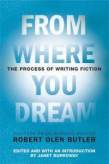 r
r
Robert Olen Butler approaches writing from the state of unconscious creation, and boldly states that if you are thinking about your writing then you are not really tapping into the heart of your work. From Where You Dream is a compelling book on how the craft of writing is an act of creation done in the subconscious, a world of sensuality and deeply felt emotion. Each chapter is a near-transcription of his writing lectures (including discussion of student work) and pushes the boundaries of how one could (or should) work. Some people will really connect to these ideas, and others will find it difficult. Those who like to write from intuition will really enjoy this book.
3) Alone With All That Could Happen by David Jauss 
For those who have a strong foundation in writing craft and are looking to push themselves into new territory David Jauss’ book Alone With All That Could Happen is the craft book for you. A series of essays on writing craft, Jauss challenges common craft concepts and pushes the reader (and writer) to really dig deeper. He claims that first person point of view can be omniscient, or that epiphanies in books are over rated to the point that they ruin perfectly good stories. He takes the common craft wisdom andputs it to the test with insight and examples. A must-read for anyone interested in taking the next step with their work.
4) Steering the Craft by Ursula Le Guin 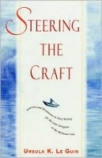
If you are new to writing (or want a nice brush-up) Le Guin’s Steering th
Originally published at Through the Tollbooth. You can comment here or there.
I recently read Tuck Everlasting for the first time—blasphemous for an author of books for children, I know—and let me tell you, I was absolutely blown away by Natalie Babbitt’s gift for description in each and every scene. And almost instantly depressed at my inability to do the same, as evidenced by my use seconds ago of the overused term “blown away.” How would Natalie Babbitt describe the emotion of being blown away? Well, I’ll tell you:
Into it all came Winnie, eyes wide, and very much amazed. It was a whole new idea to her that people could live in such a disarray, but at the same time she was charmed. It was . . . comfortable. Climbing behind Mae up the stairs to see the loft, she thought to herself: “Maybe it’s because they think they have forever to clean it up.” And this was followed by another thought, far more revolutionary: “Maybe they just don’t care!”
Natalie Babbitt on cleaning house.
Winnie had grown up with order. She was used to it. Under the pitiless double assaults of her mother and grandmother, the cottage where she lived was always squeaking clean, mopped and swept and scoured into limp submission. There was no room for carelessness, no putting things off until later. The Foster women had made a fortress out of duty. Within it, they were indomitable. And Winnie was in training.
On a road. And cows:
The road that led to Treegap had been trod out long before by a herd of cows who were, to say the least, relaxed. It wandered along in curves and easy angles, swayed off and up in a pleasant tangent to the top of a small hill, ambled down again between fringes of bee-hung clover, and then cut sidewise across a meadow.
What I would give to be able to write descriptions like these. Oh, what I would do! Since I can’t sell my soul (can I?), I settled for the next best thing: I read as many craft books as my schedule would allow, in search of the best exercise on creating descriptions I could find. And that exercise comes from Michael Seidman’s book simply titled, Fiction.
This is an exercise designed to make you as a writer use all five of your senses to craft one description. First think of a scene, any scene. Then—and brace yourself for this—write it six times. The first five times, write it using only one of the five senses each time: smell, taste, touch, sight, sound. Then, the sixth time, pull the strongest lines from each of the five one-sense descriptions and lace them together into one lush quilt of narrative beauty. It’s that easy!
No, it’s not, but it’s a step for any writer who struggles with description like I do. And, honestly, what writer doesn’t? Of course, I’m not going to write each description in my novel six times—nor should you. But let’s just say we use this exercise once in a while, and maybe the descriptions we create will be those that remain with our readers long after the last page is turned.
–Teresa Harris
I love learning. If I had unlimited resources, I'd be a full-time student for the rest of my life. Instead, I'm a teacher, which is the next best thing.
[Speaking of teachers, if you're a teacher, librarian, or homeschooling parent, be sure to read the end of this post for an update on our current giveaway contest. And if you're
not a teacher, librarian, or homeschooler, please help spread the word to those who are.]
For me, being a teacher is as much about learning as it is about teaching. To prepare for my classes, I not only reread the assigned text, I also research supplemental resources. Currently, I'm reading Stephen King's
On Writing: A Memoir of the Craft. I don't read horror stories, so I'm not a fan of Stephen King's fiction. However, I've heard wonderful things about this craft book for years. Ten years, to be exact, as the 10th Anniversary edition came out this past July. So I decided it was about time I read it.
I have to say, the timing is perfect. I'm currently teaching a six-week "Craft & Critique Workshop." The first aspect of craft I discuss in the workshop is characterization. Last night I shared with my class two things about characterization that I learned from King's book:
“Everything I've said about dialogue applies to building characters in fiction. The job boils down to two things: paying attention to how the real people around you behave and then telling the truth about what you see. You may notice that your next-door neighbor picks his nose when he thinks no one is looking. This is a great detail, but noting it does you no good as a writer unless you’re willing to dump it into a story at some point.”
And,
"Skills in description, dialogue, and character development all boil down to seeing or hearing clearly and then transcribing what you see or hear with equal clarity . . . ."
These aren't exactly new ideas for me. I received similar instructions from my teachers at Vermont College. But sometimes, I forget. That's why I consider myself fortunate to be a teacher--it forces me to remember, and it prods me to "practice what I preach."
Last week, Esther posted about
Signature Quotes. The following is another quote from Stephen King's
On Writing. It's rather long for a Signature Quote, but it really spoke to me when I read it:
"You can approach the act of writing with nervousness, excitement, hopefulness, or even despair – the sense that you can never completely put on the page what’s in your mind and heart. You can come to the act with your fists clenched and your eyes narrowed, ready to kick ass and take down names. You can come to it because you want a girl to marry you or because you want to change the world. Come to it any way but lightly. Let me say it again: you must not come lightly to the blank page.
I’m not asking you to come reverently or unquestioningly; I’m not asking you to be politically correct or cast aside your sense of humor (please God you have one). This isn’t a popularity contest, it’s not the moral Olympics, and it’s not church. But it’s writing<

Magical Menagerie, by Junzo Terada, Chronicle Books, $24.95. Build 20 enchanting animals with this unique kit of 3-D sculptures by Japanese artist Terada. Punch out paperboard pieces and fit them into slots to make whimsical stand-alone designs, including a lion with a heart-shaped mane, a deer holding its baby and songbirds sitting in a tree. Envelopes are included for mailing or storing designs. Terada's pattern and color combinations are spectacular!
The Encyclopedia of Immaturity: Volume 2, by The Editors of Klutz, Klutz, $19.95, ages 8 +, 200 pages. In this hysterical followup to 2007 manual of immature pranks and skills, The Encyclopedia of Immaturity, Volume 1, the editors of Klutz present an array of silly how-tos, from making a toiletgram to playing indoor Frisbee golf, and explore all manner of taboo subjects, including the truth about wedgies and the art of picking diary locks. (Couple this with the first volume and your 10-year-old boy will be deliriously happy.)
Made by Me, by Jane Bull, Dorling Kindersley, $14.99 respectively, ages 4-8 +, 48-62 pages. Girls will squeal with delight when they flip through this charming book of crafts with colorful tutorials that are easy to follow. Dress up a plain t-shirt with embroidered flowers, felt cupcakes and a button-trimmed collar or hand sew a two-sided doll with embroidered faces. Pair this with Annabel Karmel's Cook It Together (DK, $12.99) for a wonderful gift set.
Eragon's Guide to Alagaesia, by Christopher Paolini, Alfred A. Knopf, $24.99, ages 9 +, 32 pages. Wannabe dragon riders will delight in every page of this magical guide to the mysterious land of Paolini's Inheritance Cycle series by the creators of Dragonology. Explore a map of Alagaesia stolen from the elves' library, ink drawings of shape-shifting cats and wind-vipers and the training regimen of dragon riders, and touch the scarlet gem that lives in the chest of dragons.
My Little Fire Truck, Simon & Schuster, written and illustrated by Stephen T. Johnson, $19.99 ages 4-8, 16 pages. A wonderful segue into child play, this interactive book by Caldecott Honor-winning author Johnson encourages little ones to practice telling time and move sturdy parts on a fire engine: lift a gas nozzle and fuel the truck, test tire pressure, put away fire tools, start the ignition and steer, turn the siren light and ring the fire bell. Johnson is the author/illustrator of Alphabet City and My Little Red Toolbox.
Open Me Up: Everything You Need to Know About the Human Body, Dorling Kindersley, $24.99, ages 9-12, 256 pages. Open Me Up makes a trip through the human body feel like a walk through an amusement park with exciting
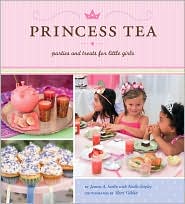
Sarlin, Janeen A. with Noelle Shipley. 2009. Princess Tea: Parties and Treats for Little Girls. Photographs by Sheri Giblin. Chronicle Books. (Cook and craft book)
Technically, this one is more for parents than young readers. But it's for parents of young readers, so I'm going to share it with you here. What is it about? Creating parties for young girls. In this case, themed-tea parties. The themes are "Lotus Princess Tea" (China), "Underwater Princess Tea" (South Sea Islands), "Cowgirl Princess Tea (Southwest United States), "Fiesta Princess Tea" (Mexico), "Country Garden Lavender Princess Tea" (France), "Indian Princess Tea" (India), "African Princess Tea" (Africa), and "Fairy Princess Tea" (fairyland). Each theme offers suggestions on how to decorate, suggestions on dressing up, recipe suggestions, and craft and activity suggestions/instructions. Some activities are more complex than others.
I probably would have enjoyed this one more if there had been more photographs. I'd have liked to seen photographs for each recipe and each craft. (That could be me, but I like to see what it is supposed to look like. That way I can judge how I'm doing. Also for recipes, food almost always looks more appetizing, more appealing, if you can see it. Exceptions for this rule do exist, however.)
© Becky Laney of Young Readers
Craft books can be a huge help, but I don’t always read them straight through. I often find some nugget that inspires me enough to make me go off to write instead. I figure the more helpful the book, the less I have to read, and I save the rest for later.
 This semester, I’m teaching a class on writing memoirs. As I usually do when I’m preparing to teach, I checked out a stack of books from the library. A couple of them are familiar, reliable resources—I’ve read them before and found them useful: Natalie Goldberg’s Old Friend from Far Away: The Practice of Writing Memoir and Writing the Memoir: From Truth to Art by Judith Barrington. Others were new to me, and I enjoyed exploring the subject from their varied points of view.
This semester, I’m teaching a class on writing memoirs. As I usually do when I’m preparing to teach, I checked out a stack of books from the library. A couple of them are familiar, reliable resources—I’ve read them before and found them useful: Natalie Goldberg’s Old Friend from Far Away: The Practice of Writing Memoir and Writing the Memoir: From Truth to Art by Judith Barrington. Others were new to me, and I enjoyed exploring the subject from their varied points of view.
 Even if you are not writing a memoir, such books can help in several ways:
Even if you are not writing a memoir, such books can help in several ways:
- by providing a glimpse into another writer’s approach
- by reminding you that writers keep writing in spite of obstacles
- by bringing up true stories that can inspire leaps into fiction, memoir, or something else
- by sharing exercises that might help you move forward
One book grabbed my attention not only for its playful tone but also for its helpful format:
Thinking About Memoir by Abigail Thomas. Instead of suggesting exercises and then giving examples of how they might be done, Thomas tells stories first and then provides writing prompts on topics that flow from the stories.

She writes about seeing a buzzard far away on a beach. After watching it awhile, she decides to walk up for a closer look and discovers a stick with a plastic bag tangled around it. Her instruction is to write about mistaking something for something else.
She says her sister suggests that “a good way to get going on memoir is to write your will. You have to decide who gets all your treasures, and this involves looking at them, and remembering where you found them.” Her assignment: write about your treasures.
She describes a trip with her sister after they had each been given a box of six truffles. “The tiny print said two pieces contained 310 calories,” she writes. “We were sitting on the bus headed downtown, quietly doing our calculations: Judy was dividing by two and I was multiplying by three.” This story cracked me up; the assignment that follows it is to write about a time when you recognized a difference between you and another person.
In the spirit of
Thinking About Memoir, I’m including a memory from my childhood and a choice of writing prompts that stem from it.
 Writing Workout: Begin with a Memory
Writing Workout: Begin with a MemoryOne Sunday morning when most of my family had gone to church, I decided to make everyone breakfast. My father was asleep upstairs. I remember scrambled eggs and bacon, so I must have been old enough to use the stove on my own.
I was thinking about how surprised my family would be when I heard a loud crash outside. I ran out and saw a car halfway up our front steps.
My father came out and discovered that the driver was a woman whose husband had recently died. She was on her way to the cemetery with a vase of flowers on the seat next to her. When the flowers started slipping off the seat, she reached to grab them and lost control of her car.
As soon as he found out she was not hurt, my father told her not to worry. He would fix the steps himself. I don’t remember the woman, the car, whether anyone called the police, or what happened when the rest of the family came home, but I do remember his kindness.
Assignment:
Write about a time when you were home alone.
or
Write about someone being compassionate to a stranger.

Luxbacher, Irene. 2009. 1 2 3 I Can Collage! (Starting Art series). Kids Can Press.
This book is part of a series, the Starting Art series. Earlier titles include 1 2 3 I Can Draw, 1 2 3 I Can Paint, 1 2 3 I Can Sculpt. Granted I've only read this title--1 2 3 I Can Collage--but if the other titles are anything like this one, I must say that they'd all be must-haves for the classroom, the library, and the home.
(I think they'd be great to have if you homeschool your children. They might make you feel more comfortable, more confident, in introducing art to your children's day without feeling overwhelmed because you yourself are not an expert.)
We have within the book step-by-step projects. Everything sounds so simple, so straightforward, so direct...and so fun.
I love the note she includes for parents and teachers:
3 Tips to ensure a good collage experience every time
1. Use inexpensive materials and make sure your young artist's clothes and the work area are protected from spills. This way it's all about the fun, not the waste and the mess.
2. Focus on the process rather than the end product. Make sure your young artist is relaxed and having fun with the information instead of expecting perfection every time.
3. Remind your young artist that mistakes are an artist's best friend. The most interesting collage ideas and paper combinations are often discovered by mistake.
© Becky Laney of Young Readers

By:
Aline Pereira,
on 2/3/2008
Blog:
PaperTigers
(
Login to Add to MyJacketFlap)
JacketFlap tags:
Carol Anne Duffy,
Henriette Sauvant,
Rapunzel and Other Magic Fairy Tales,
Steve Johnson,
The Frog Prince Continued,
The Lost Happy Endings,
The Stinky Cheese Man,
fairy tales,
Picture Books,
Lane Smith,
Anthea Bell,
Jane Ray,
Jon Scieszka,
Books at Bedtime,
reading to children,
The Tiger's Bookshelf,
Add a tag
 It’s been a while since we read any fairy tales but our local library has recently added a goodly number of fairy tale books to its collection so we thought we’d delve in. We came home with an armful… some of them are traditional, others are modern (re)tellings or parodies.
It’s been a while since we read any fairy tales but our local library has recently added a goodly number of fairy tale books to its collection so we thought we’d delve in. We came home with an armful… some of them are traditional, others are modern (re)tellings or parodies.
I knew that Jon Scieszka’s The Stinky Cheese Man and Other Fairly Stupid Tales and The Frog Prince Continued would both go down well – they are funny and wittily illustrated (by Lane Smith and Steve Johnson respectively); and both depend on the kind of superior knowledge that children delight in - all the stories would be somewhat lost in the telling if you didn’t already know the originals.
 The Lost Happy Endings by Carol Anne Duffy and illustrated by Jane Ray was visually irresistible. Duffy’s rich eloquence also lives up to all expectations: but a word of caution. Although this is a new story, she takes the fairy tale genre back to its grass-roots level. No wishy-washiness here. The retribution meted out to the thieving witch is absolute. It is more suitable for slightly older children: and should be cherished for that, for it sometimes seems that the older children get, the harder it is to find beautifully illustrated picture books for them. Certainly both my children relished both the pictures and the wonderful, descriptive language and each bore the book off to read independently after I’d read it to them.
The Lost Happy Endings by Carol Anne Duffy and illustrated by Jane Ray was visually irresistible. Duffy’s rich eloquence also lives up to all expectations: but a word of caution. Although this is a new story, she takes the fairy tale genre back to its grass-roots level. No wishy-washiness here. The retribution meted out to the thieving witch is absolute. It is more suitable for slightly older children: and should be cherished for that, for it sometimes seems that the older children get, the harder it is to find beautifully illustrated picture books for them. Certainly both my children relished both the pictures and the wonderful, descriptive language and each bore the book off to read independently after I’d read it to them.
 There were several anthologies of traditional fairy tales to choose from and I have to admit I was slightly dubious as to how my boys would take to several nights in a row of traditional “happy-ever-after” tales: they assure me every time romance is mentioned that all that stuff is yeuch… But of course, I had fallen into the trap of equating fairy-tale with romantic and there is so much more to the traditional stories than that. Anthea Bell’s name is a talisman for me so her translation of Henriette Sauvant’s selection of Rapunzel and other Magic Fairy Tales was the obvious choice (helped by the surreal cover illustration)– and has been bourne out. We have so far enjoyed stories we know well, as well as come across some new to us all.
There were several anthologies of traditional fairy tales to choose from and I have to admit I was slightly dubious as to how my boys would take to several nights in a row of traditional “happy-ever-after” tales: they assure me every time romance is mentioned that all that stuff is yeuch… But of course, I had fallen into the trap of equating fairy-tale with romantic and there is so much more to the traditional stories than that. Anthea Bell’s name is a talisman for me so her translation of Henriette Sauvant’s selection of Rapunzel and other Magic Fairy Tales was the obvious choice (helped by the surreal cover illustration)– and has been bourne out. We have so far enjoyed stories we know well, as well as come across some new to us all.
 As luck would have it, Jon Scieszka visited my school district today. So I grabbed a chance to have the newly-appointed “Ambassador for Young People’s Literature” pose with Jazz, by Walter Dean Myers. Here's what Jon said, “Audiobooks are great! I love audiobooks – they are perfect way to have a story told aloud, and are a great way for kids, especially those who need a little help, to experience good literature.” I know Live Oak Media, the producers of Jazz, will be glad to know that Jon will be playing their outstanding title on his CD player tonight!
As luck would have it, Jon Scieszka visited my school district today. So I grabbed a chance to have the newly-appointed “Ambassador for Young People’s Literature” pose with Jazz, by Walter Dean Myers. Here's what Jon said, “Audiobooks are great! I love audiobooks – they are perfect way to have a story told aloud, and are a great way for kids, especially those who need a little help, to experience good literature.” I know Live Oak Media, the producers of Jazz, will be glad to know that Jon will be playing their outstanding title on his CD player tonight!

If the UN can have a goodwill ambassador, then why not children's literature? In a super-cool move, The Library of Congress has appointed Children's Author Jon Scieszka as the first National Ambassador for Young People's Literature. He doesn't have the status of Children's Laureate, a title which is used in the UK. But he will spend the next two years stumping for reading. The LC have made a great choice. His off-beat sense of humor, and his dedication to keep boys reading in particular(check out his Guys Read site) works in his favor. Scieszka understands that an emphasis needs to be placed on reading as much as on books. Not every kid wants to read War and Peace (Yes! I was the exception!) But most kids want to have fun. Scieszka wants to connect kids with fun things to read. All the power to him.
Some Scieszka faves:
Cowboy and Octopus (a NJFK Book of the Week)
The Time Warp Trio series (a great choice for kids looking to move away from Captain Underpants)
Seen Art?
The Stinky Cheeseman and Other Fairly Stupid Tales
I'm a little late to the announcement of this, but, just in case you didn't know it yet, Jon Scieszka has been named the National Ambassador for Young People's Literature.
Jen Robinson has a couple good posts about this, here and here.
Congratulations, Jon! Good luck with this new role.

By:
Alice Pope,
on 1/4/2008
Blog:
Alice's CWIM blog
(
Login to Add to MyJacketFlap)
JacketFlap tags:
Jon Scieszka,
Wendy Lamb,
Christy Ottaviano,
Guys Read,
Richard Jackson,
Megan Tingley,
Jon Scieszka,
Guys Read,
Christy Ottaviano,
Richard Jackson,
Megan Tingley,
Wendy Lamb,
Add a tag
Recent Children's Publishing News (just in case you haven't seen it)...
- Christy Ottaviano Books. Joining the likes of Richard Jackson, Wendy Lamb, Megan Tingley and others, Henry Holt's Christy Ottaviano has been promoted to editorial director of her own eponymous imprint, Christy Ottaviano Books, publishing "literary and commercial picture books and fiction for all ages. Books that encourage imagination and free-thinking, foster a sense of family and community, target the feelings of children, and speak directly to children’s interests as they explore various milestones. Books that are reassuring as well as those that challenge readers--intriguing books for inquisitive kids."
- Jon Scieszka's new post. Children's book author (and funniest author I've
 ever seen in person) Jon Scieszka has been named the U.S.'s first national ambassador for young people's literature by the librarian of Congress, James Billington. He'll act as "an evangelist for reading." This is a deserving post for Scieszka--check out his Guys Read site, a web-based literacy program to help boys find stuff they'd like to read.
ever seen in person) Jon Scieszka has been named the U.S.'s first national ambassador for young people's literature by the librarian of Congress, James Billington. He'll act as "an evangelist for reading." This is a deserving post for Scieszka--check out his Guys Read site, a web-based literacy program to help boys find stuff they'd like to read.
Jon Scieszka has been named the first National Ambassador for Young People's Literature.
Great article in the New York Times profiling Scieszka and his new role.
Jon Scieszka (”it rhymes with Fresca”) was declared the first ambassador for Young People’s Literature, today. The position is the children’s book equivalent of the Library of Congress’s poet laureate program. The new role will entail promoting the importance of reading by reaching out to parents, teachers and children everywhere and, in particular, Scieszka says, “to children who are considered reluctant readers.” Author of many children’s books, including the very successful Time Warp Trio series, The True Story of the 3 Little Pigs and Stinky Cheese Man and Other Fairly Stupid Tales, Scieszka is also the founder of Guys Read, a literacy program and website aimed at encouraging boys to read.
What should we expect from a guy whose Little Red Hen questions the presence of the ISBN number in the volume she appears on, and who allows her, later on, to be eaten by the giant from Jack and the Beanstalk?… Well, lots of gutsy energy to impart momentum and backbone to his important mission.
View Next 4 Posts
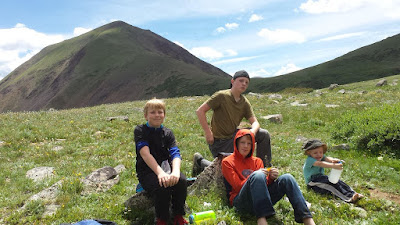
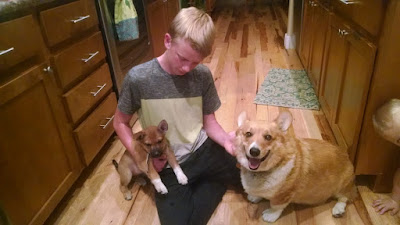








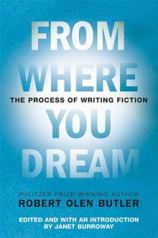
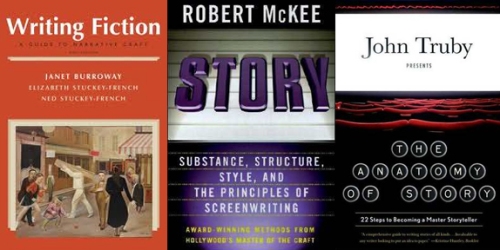
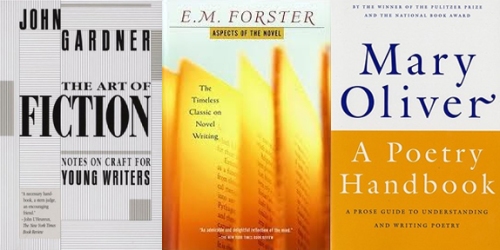
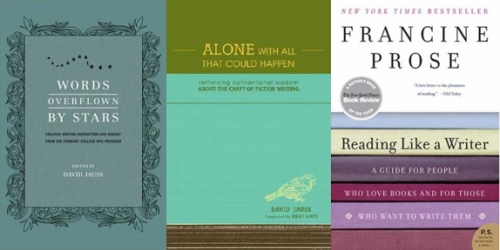



















That's a great book. I really like Plot and Structure by James Scott Bell too.
I like Save the Cat - and his "beat sheet" is a useful tool for pacing.
But I'm gonna have to say, as far as my faves go, I like these:
"Real Revision" by Kate Messner
"Anatomy of Nonfiction" by Margery Facklam & Peggy Thomas
Why I like them: they are focused on writing for children and include nonfiction as well as fiction. While Blake Snyder focuses on what makes a screenplay sell, Messner, Thomas & Facklam focus on what makes your story good, better, best.
Characters, Emotions and Viewpoint by Nancy Kress is my favorite. There's a great emphasis on emotions and how they influence motivations. I've reread it so many times.
I have so many that I love, but one of my big time favorites is Writing 21st Century Fiction by Donald Maass. This is his best writing book yet.
I have several as well, but liked Writing Great Books for Young Adults by Regina Brooks. I highlighted and tabbed most of the book.
Love the "Cat" books and anything by James Scott Bell. Currently I'm really digging The Plot Whisperer by Martha Alderson.
Anne Lamott's BIRD BY BIRD. I buy every copy I find at used book stores to give away to other writers.
-- Tom
Wow, you guys, this is wonderful. I have (and love) some of these already, and you can bet I'm going to read the rest! Oh, my poor credit card...
I second all the books mentioned. The craft book that is my current bible is The Anatomy of Story by John Truby. It's been unbelievably helpful. I really can't recommend it enough!
BIRD BY BIRD by Anne Lamott and ON WRITING by Stephen King. Have read them both multiple times.
SELF EDITING FOR FICTION WRITERS by Renni Brown & Dave King: http://www.selfeditingforfictionwriters.com/ But here's the thing. You have to grab a pencil and do the exercises.
Don't get me wrong; it's a great, help read. But the exercises really make clear what the authors are trying to teach.
Maybe you're not an exercise person. I'm not. But I was on the runway on a Jet Blue flight at O'Hare and stuck there for a few hours (back when that was happening more frequently) and had nothing else to do.
So, I dug more deeply into the craft book I'd enjoyed flipping through, and it changed my writing for the better.
No, I don't have a books shelf full of books on writing. What I have are books bought mostly for my children's English classes: The Elements of Style (Strunk and White); Eats, Shoots and Leaves (Lynne Truss); Woe is I (Patricia T. O'Conner). Grammar books, all.
As far as craft books go, I read On Writing (Steven King) years ago, long before I put pen to paper--er, fingers to keyboard--to write my own story. I love the way King writes about his own writing journey, then segues into writing tips full of humorous yet insightful tips on the actual writing process. I've since read it twice more. That's my favorite craft how-to book right now, plus anything Kristen Lamb (@KristenLambTX) writes. (Speaking of, read how Kristen breaks down the plot for FLIGHT: When the Hero is His Own Worst Enemy. http://warriorwriters.wordpress.com/2013/03/18/when-the-hero-is-his-own-worst-enemy-what-we-can-learn-from-flight/)
Again, the link didn't work. What can I say? Cut and paste? :-P
I love Save the Cat. All the books mentioned are great, and I loved all of Donald Maass' books. Lisa Cron's Wired for Story. And Cyn's choice is also one of my favorites, Self-editing for Fiction Writers. There are so many great ones, and of course there is On Writing by Steven King.
Fantastic suggestions, guys. I'll be spending a lot of time reading these craft books over the next few weeks!